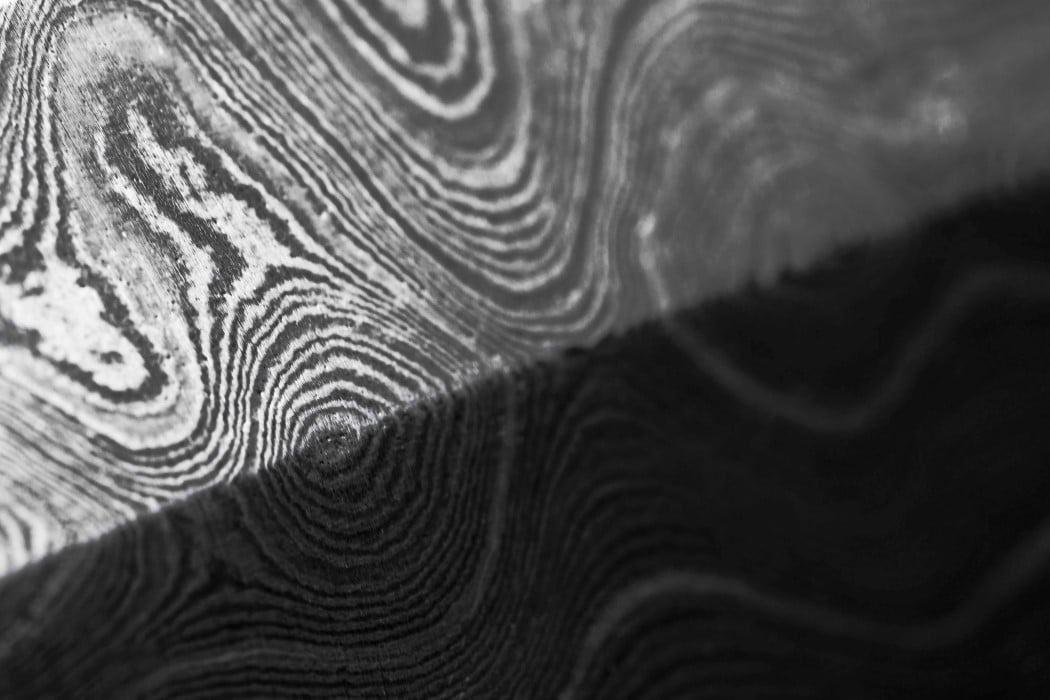
If you want to spot a true EDC enthusiast, gauge their reaction upon saying the words Damascus Steel. Chances are, if they’re a true-blue everyday carry aficionado, even so much as taking the name of the marbled metal will send chills down their spine, and rightfully so… because Damascus Steel is an exquisite metal that’s not just strong, it’s a pleasure to look at, with its wonderful, organic pattern. So, let’s delve deeper into the origins of this steel, the way it’s made, and honestly, how different is it from other tool-worthy steel alloys.
The Origin of Damascus Steel
The word Damascus (or Damask) comes from the Syrian capital city, where one can date back the very origin of Damascus Steel to as early as 400 A.D. However, it’s worth noting that the steel we refer to as Damascus Steel today is, for the lack of a better term, a fake, or an imitation. The truth is that the traditional method of crafting this sort of steel got lost over time. Some believe that the method of forging Damascus Steel was lost as early as the 1700s, due to a lack of proper documentation combined with cultural suppression by western imperialism. The steel we fondly refer to as Damascus Steel today is actually a patternweld, a steel formed by folding/mixing in cementite (iron carbide) and ferrite (a crystalline form of iron) into the steel to give it its distinct banding effect. The truth is that this sort of steel isn’t considered pure steel, but that’s considered an advantage, especially since it gives the steel a distinct look… and strength too.
Patternweld steel started being referred to as Damascus Steel back in 1973, when popular bladesmith William F. Moran unveiled his “Damascus knives” at the Knifemakers’ Guild Show. While the name Damascus Steel stuck around for any sort of patterned steel since that day, the original Damascus Steel is considered stuff of legends.
How Modern ‘Damascus Steel’ is made
Pioneered by William F. Moran himself, the steel we commonly refer to as Damascus Steel today is in fact, created using a technique called ‘billet welding’. Billet welding involves mixing together a variety of alloys of steel and/or iron together by first welding them to each other, and then folding the overall mass multiple times, giving you sandwiched layers fused alloys with different hues. The welding process can be altered to give you different patterns, for example Devin Thomas, a famed knifesmith has practically perfected the process of billet-welding, and can now create a wide series of patterns at will. Knifesmiths also end up choosing and pairing alloys together based on their color contrast and also the properties that they lend to the knife itself, imparting not just a high contrast on the ‘damascus’ pattern, but also strength to the blade, along with properties like corrosion resistance, etc.
Is it worth the hype?
There are two schools of thought in this matter. In short, purists don’t think Damascus Steel is any good, but enthusiasts love the way the blades look and perform. The long story is that Damascus Steel isn’t pure. It contains a number of ‘impurities’ like cementite, ferrite, pearlite, martensite, etc. that even though enhance certain properties of the blade, the pattern formed on the knife as a result is viewed more as cosmetic, rather than functional. There’s also the argument that the blades formed using billet welding aren’t honoring the original tradition of making Damascus steel blades (as was done in Syria). There are, in fact ways of producing blades that are stronger, either using stronger alloys, or opting for forging techniques like the Japanese San-Mai, that sandwich a harder carbon-steel layer between two stainless steel layers. (San-Mai blades can look a slight bit like Damascus Steel blades at the edges where you see the different hues of the different layers)
As far as enthusiasts and collectors go, Damascus Steel results in knives that look unique and different, not just from other knives, but from each other too, because no Damascus Steel knife boasts of the exact pattern on the blade (there are always minute deviations, much like wood grain). A well-made Damascus blade will stay sharp for longer than most production quality knives too, given the strength-building alloys added to the mix.
So… even though the tradition has been lost to man, many people have devoted their lives to trying and studying past relics and recreating the process. Known as Damascus in the Middle East, or even Wootz in India and Sri Lanka, this patterned, marbled steel has been around for practically millennia, enchanting people with its hypnotic lines, and promising a build quality that is remarkably strong. Used today, not just for knives, but for even pens, wallets, and multitools, the steel we presently call Damascus Steel isn’t going anywhere any time soon!
Check Out: Demystifying QR Codes: What are they and how do they work